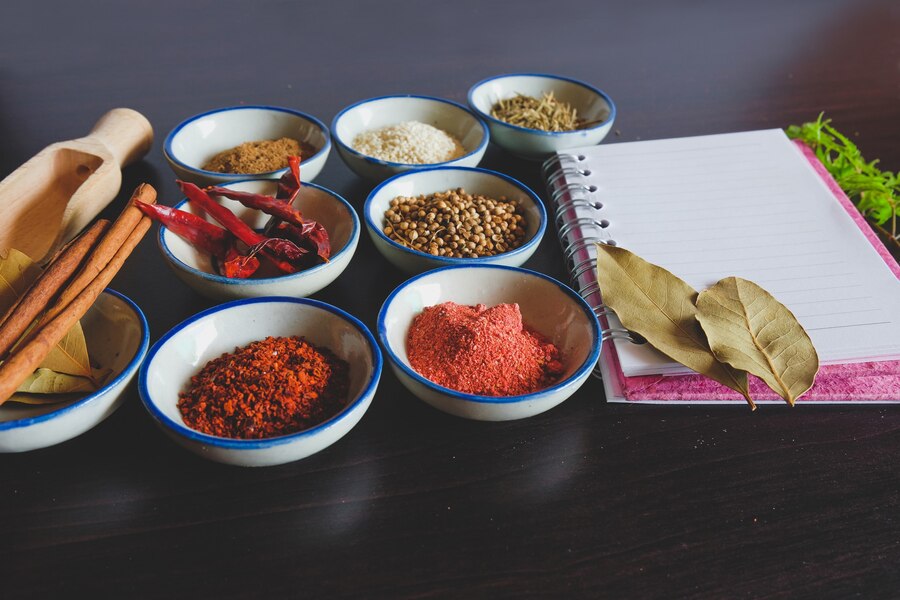Introduction
In the culinary world, spices are the cornerstone of flavor. Whether you’re crafting an exquisite dish for fine dining or preparing a hearty meal for a family gathering, freshly ground spices can make a world of difference. While pre-ground spices offer convenience, they often lack the depth and complexity that whole spices provide. For professional chefs, the ability to grind spices to the perfect texture is an essential skill that enhances both the aroma and the flavor profile of their dishes.
Freshly ground spices bring out essential oils and compounds that are otherwise locked inside the spice’s natural structure. The process of grinding not only releases these oils but also intensifies the spice’s flavor. As a professional in the culinary field, knowing how to grind spices effectively can elevate your cooking to new heights, ensuring that every dish is bursting with vibrant, authentic flavor.
This guide will explore the various tools, techniques, and best practices for grinding spices, helping you understand how to maximize their potential in your cooking.
1. Understanding the Spice Grinding Process
Grinding spices is more than just a task of breaking them down into smaller pieces; it’s a process that unlocks their true flavor potential. Spices are packed with essential oils, which are volatile and aromatic. When you grind a spice, you’re releasing these oils, which enhances its aroma and flavor profile.
Why Grinding Spices Matters
Whole spices maintain their integrity much longer than ground spices. For example, a whole black peppercorn will keep its pungency far longer than pre-ground pepper, which starts to lose its aroma soon after grinding. Freshly ground spices not only release more flavor but also bring more vibrant colors and fragrances to your dishes.
Chemical and Physical Changes
Grinding spices causes a physical change by breaking them into smaller particles, which increases the surface area exposed to air. This exposure speeds up the release of essential oils, enhancing the flavor of the spice. Additionally, grinding can cause chemical changes as heat is generated during the process. This heat may slightly alter the spice’s profile, which is why fresh grinding is often preferred to avoid losing its natural flavors.
When to Grind Spices
For the best results, grinding spices just before use is crucial. Pre-ground spices, even when stored properly, lose their potency over time, while freshly ground spices offer the most intense and vibrant flavors. In professional kitchens, this principle applies to spices like cumin, coriander, cardamom, and cinnamon, which release their oils most effectively when ground just before use.
2. Choosing the Right Tools for Grinding Spices
The choice of tool for grinding spices can significantly impact the consistency and quality of your grind. From traditional mortar and pestle to electric grinders, each tool has its advantages and disadvantages depending on the task at hand.
Manual vs. Electric Spice Grinders
- Mortar and Pestle: This age-old tool allows for a more hands-on approach. It gives you full control over the grind size and is perfect for small quantities of spices. While it takes more time and effort, many chefs prefer the tactile experience, as it lets them adjust the grind to suit the dish. For spices like cardamom and cloves, a mortar and pestle offers precision and consistency.
- Blade Grinders: Blade grinders are inexpensive and commonly used in kitchens for quick grinding. However, they are less consistent than other methods, producing unevenly sized particles that can affect the flavor. Blade grinders are best suited for smaller, less delicate tasks where speed is more important than precision.
- Burr Grinders: Burr grinders provide the most consistent grind, as they crush spices between two abrasive surfaces, ensuring uniform particle size. This is ideal for grinding larger quantities of spices or for spices that require a uniform texture. Burr grinders are especially helpful for professionals who need precision, as the consistent grind helps maintain flavor integrity.
Specialized Grinders for Specific Spices
Some spices require specialized tools for optimal results. For example, cinnamon sticks are hard and fibrous, making them difficult to grind without the right equipment. A high-quality electric grinder or a heavy-duty manual grinder is necessary for achieving the fine, smooth consistency required for a cinnamon powder. Similarly, certain spices like cloves or nutmeg benefit from manual grating or grinding to avoid overheating or overprocessing in automatic grinders.
Other Tools
Other tools, such as spice mills or pepper grinders, are commonly used in professional kitchens. These tools offer a consistent and easy method for grinding spices like pepper, which are often used in large quantities. Spice mills can be particularly useful for chefs who require precision during service, offering quick, consistent results.
3. Methods for Grinding Spices
Grinding spices may seem straightforward, but different methods produce distinct textures that can dramatically affect the outcome of a dish. Professional chefs understand that the grind size impacts both the cooking process and the final flavor.
Dry Grinding
Most spices, such as black pepper, coriander, cumin, and turmeric, are best ground dry. Dry grinders or manual tools like the mortar and pestle can achieve a range of textures, from coarse to fine. The key is to select the right grind for the intended dish. For instance, a fine grind of cumin is perfect for a smooth curry, while a coarser grind is better for a marinade.
Wet Grinding
Some dishes, particularly in Indian, Thai, or other Southeast Asian cuisines, require wet grinding. This technique involves adding a small amount of liquid (like water or oil) to the spice mixture, allowing it to become a paste. Wet grinders or stone grinders are ideal for making spice pastes, such as curry or garam masala, as they create a smoother, more cohesive texture. Wet grinding preserves the freshness and potency of spices in these mixtures, and is crucial when grinding fresh ingredients like ginger, garlic, or chilies.
Blending and Mixing Spices
Often, professional chefs need to grind a combination of spices to create complex flavor profiles. When blending spices, it’s important to adjust the grind size to suit the specific mix. Some spices, like cinnamon and cloves, may need a finer grind, while others, like mustard seeds, can be coarsely ground. Ensuring uniformity in the blend is key for consistency in flavor across multiple servings or batches.
Time Considerations
For efficiency, grinding spices in batches is often a practical choice. However, you should avoid grinding too much in advance, as ground spices lose their potency relatively quickly. When grinding in batches, it’s essential to use the freshest spices available and grind only as much as needed.
4. Understanding Spice Textures and Their Impact on Dish Flavor
The texture of ground spices plays a significant role in the final dish. The grind size directly impacts the release and absorption of the spice’s flavor during cooking.
Fine Grinding
A fine grind leads to more intense, immediate flavor release. It’s ideal for smooth sauces, soups, and curries, where the spices need to dissolve completely into the liquid. Fine grinding also works well when making spice blends like garam masala or curry powder, where uniformity in texture is crucial.
Coarse Grinding
Coarse grinding is typically used for rubs, stews, or broths, where a subtler spice presence is desired. Coarser particles release their flavors more gradually, allowing the dish to take on the spice flavor over a longer cooking period.
Crushing Spices vs. Grinding
In some cases, lightly crushing spices (such as peppercorns) instead of grinding them can enhance the texture of a dish. Crushed spices add a burst of flavor and texture without overwhelming the dish with too much spice.
5. Best Practices for Storing Ground Spices
Proper storage is essential for maintaining the flavor and potency of ground spices. Storing them in airtight containers, away from heat, light, and moisture, will significantly prolong their shelf life.
Proper Containers
Spices should be stored in airtight containers to prevent exposure to air, which accelerates flavor degradation. Glass jars with sealed lids or vacuum-sealed bags are ideal. For larger quantities, consider bulk storage options that still offer protection from light and moisture.
Storage Location
Spices should be kept in a cool, dry, and dark place, such as a pantry or spice drawer. Avoid storing them near heat sources like stovetops or windows, as direct sunlight can cause them to lose their flavor more quickly.
Expiration and Freshness
Ground spices typically lose their potency after six months to a year. To maintain their full flavor, buy spices in smaller quantities, and replace them regularly. Regularly checking the freshness of your spices ensures you’re always using the best quality ingredients in your cooking.
Conclusion: Maximizing the Potential of Freshly Ground Spices
Grinding spices is an art that combines precision and technique. Whether you’re using manual tools or electric grinders, each method has its unique advantages in the kitchen. By understanding the science behind grinding, choosing the right tools, and practicing the best grinding methods, professional chefs can maximize the impact of spices in their dishes. Freshly ground spices will always yield the best flavor and aroma, ensuring that your culinary creations stand out and delight your guests.










